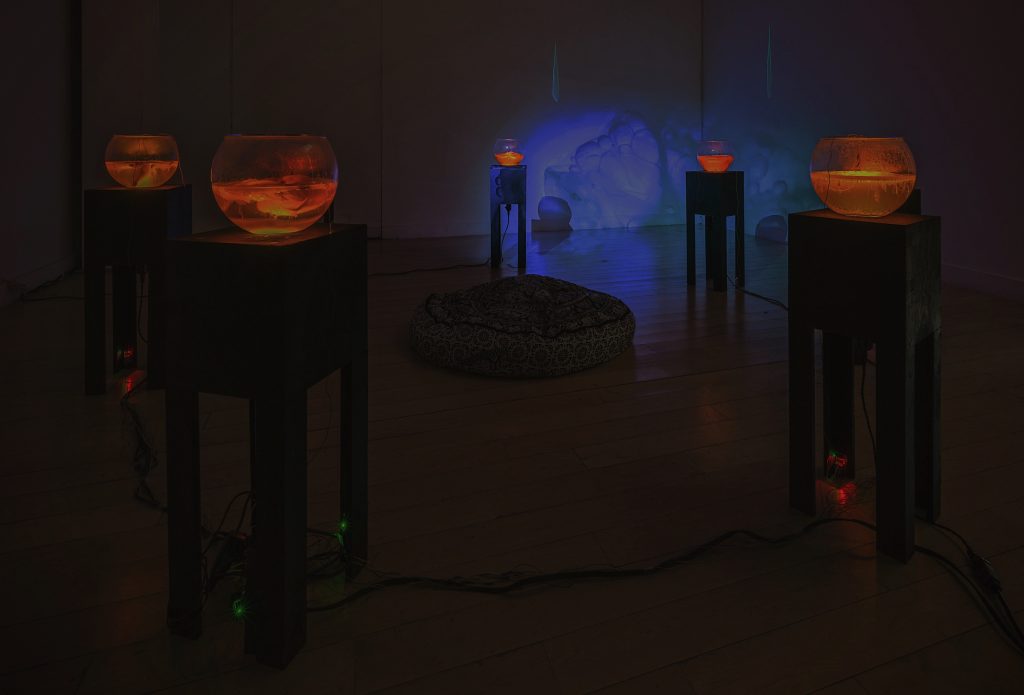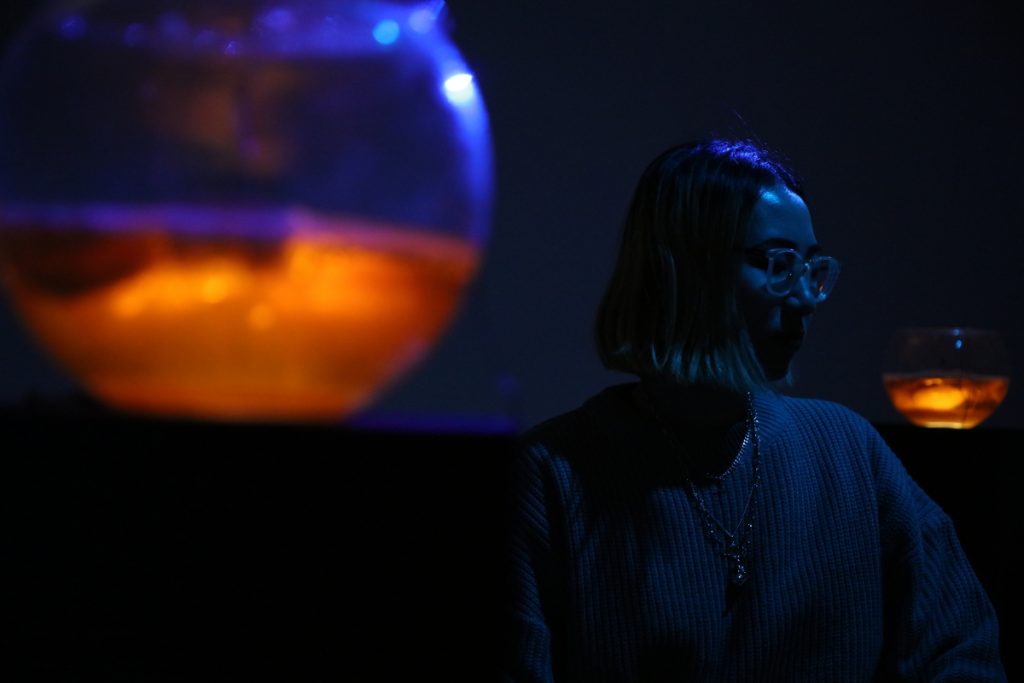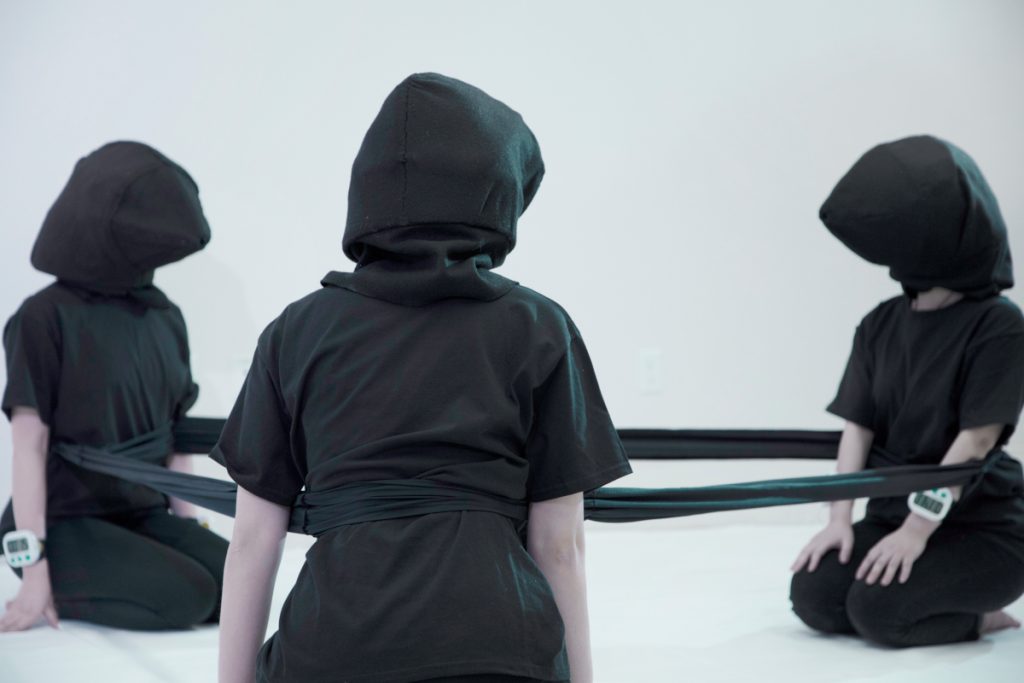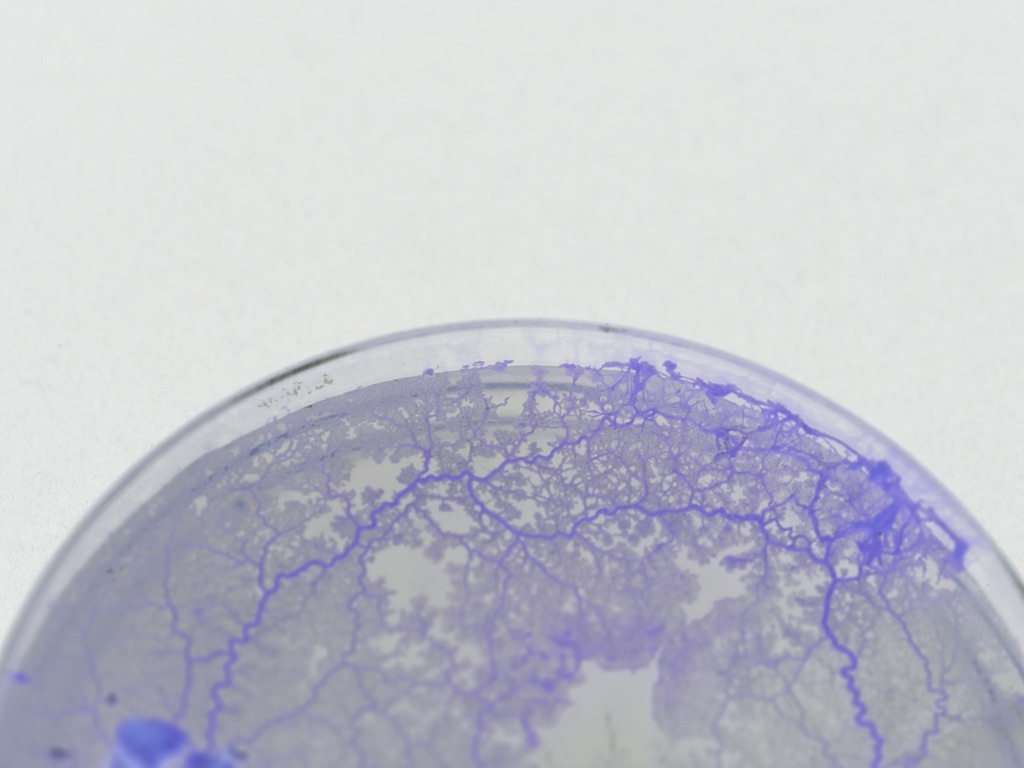Name: Tianyue Su
Which came first in your life, the science or the art?
It is difficult for me to determine which one came first. In my practice, art, technology, and science have always merged, focusing on expanding human perception. I don’t want my work to be confined to a specific field, so I always work across multiple disciplines and keep art creation within a wide range of digital media, physical installations, and bio-art. Working in such a manner leads me to face new visual prospects and consider futuristic modes of perception.

Which sciences relate to your art practice?
My interests lie in diverse topics. Recently I have been drawn to GMO technology, bioengineering, microbes, and quantum mechanics. My practice explores how interactive technological systems can relate to human beings and their sensory capabilities, behaviors, and communications. I am interested in the complex relationships between “living” and “non-living” entities, as well as the mysteries. Normally, our experience of the world is limited since we are constrained by our biology. We accept information as it is presented to us. I see my body as an interface to interact with the external environment, living things, and machines. Thus, I seek to expand and enhance human perception, combining art and science, and also investigate how technology shapes “imperceptible relationships.”
For example, 2nd Connect (2019) is an “interspecies connector” designed to create novel imperceptible relationships between an audience, SCOBYs (symbiotic culture of bacteria and yeast), and the environment in which they both dwell. In the process of growing living SCOBYs, I implanted a vibration motor, as well as a piratical dust sensor and sound sensor. These sensors detect information from the environment and audience behavior, translating the data into vibrations that are transmitted to the SCOBYs in real time (the activity of vibration depends on the phases of the life cycle of the SCOBY). Once a person enters into the space, they calibrate the SCOBY’s behavior. They are able to physically perceive the connection to the SCOBYs through their senses of vision, hearing, and smell. I see this work as a metaphor for communication between different human identities in social networks.



What materials do you use to create your artworks?
The selection of materials is very important to me. Once a material is used in work, its physical information directly connects with the audience’s sensory experience and triggers mental perception. Besides that, and more important, is the hidden symbolic meaning beyond the perceptible material, such as the cultural context, organic activity, production process, or even process of inventing material for the work. I always try to combine hard media (digital, sculpture) and wet media (silkworm, mold, other living materials) in my work, mixing mechanical, digital, and organic logic to create an immersive experience. The interaction between the audience and the work is also significant to me, and I want to provide a space in which people can generate their own narratives, thus adding another layer of interpretation to the art. The creation and display processes all become a part of the piece—that is, the work remains in a “living growth state,” rather than being a static sculpture.
“Vibration” is also a particular element that always appears in my work, such as mechanical vibration, biological vibrations, the vibrational elasticity of fabric, and even the oscillations of the human body and spirit. Just as scientist Albert Einstein said: “Everything in life is vibration.”
“The interaction between the audience and the work is also significant to me, and I want to provide a space in which people can generate their own narratives”
Tianyue Su
Artwork/Exhibition you are most proud of:
I would like to introduce the latest work I made, influenced by the novel coronavirus. Bio Calibrator (2020), is a behavior performance/experiment based on the research of Physarum polycephalum which aims to explore the meaning of intelligence. In this project, Physarum polycephalum, a common yellow slime mold, which is a brainless creature but has shown intelligent behavior, is selected for research and study. Based on the growth structure of this mold, I designed a participant for humans with specific rules, each aspect of the performance corresponding to a biological mechanism of the slime.
The motivation of the performers is to constantly search for water, and the action of the humans exploring the environment matches the biological characteristics and growth algorithm behavior of slime mold. In the performance, participants are tied together to become a new mass cell, redefining relationships between individuals. Meanwhile, the performers’ visual perception is restricted by wearable structures and language communication is not allowed. The movement trajectory is recorded on a white canvas with yellow powder tied to their body. When the energy of the mass cell (powder) is exhausted, the performance ends. Find out more about the Bio Calibrator performance here.
Bio Calibrator is not only a metaphor. I build a reversed process in which the behavior of “higher humans” is completely determined by a single-celled creature. By enacting the exact opposite operation, I hope to destroy the stability of the audience, question their beliefs, and re-examine the relationship between human beings and other living things and organisms. Especially during the spread of COVID-19 in the United States in this difficult period, people’s behavior and life patterns have completely changed. Through this we can see how it is completely possible for single-celled organisms to entirely change the lives of humans.



Which scientists and/or artists inspire and/or have influenced you?
At the very beginning, I was inspired by the works of Stelarc, Neil Harbisson, and Eduardo Kac, which introduce imaginative fissures into a narrative around human and nonhuman identities, slowly undoing anthropocentrism. I started to pay attention to the intersection of art and science, interested in the domain of biology and technology.
Pierre Huyghe is one of the artists I have followed. His constructed organisms combining not only biological, technological, and fictional elements but also produces immersive, constantly changing environments in which humans, animals, and non-beings learn, evolve, and grow. Other than that, there are so many great artists that make fantastic work. Michal Rovner, Orkan Telhan, Janet Cardiff, Ernesto Neto, Anika Yi…the list goes on!
Is there anything else you want to tell us?
I try to let things happen within a structure, yet open to chance. And I combine conceptual thoughts and somatic experience together into succinct visual and emotional play.
For more by Tianyue Su, visit her website or Instagram.
Share this Post

